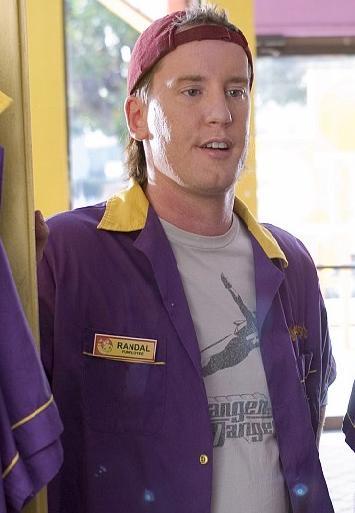Higher education has done things a certain way for a long time, and that's been acceptable because most of the students could work with it. But the changes in student population, coupled with the lofty goals set for college graduation and ever-increasing requirements to enter the job fields that pay a living wage, require us to rethink some of the assumptions we've been able to make in the past.
This is an issue because, as we continue to figure out how to help students be more successful in college, the answer becomes more and more evident. We just have to hurry up and wait.
In California, a 2-year degree takes more like 4 years. Why? Sometimes, students need some advising to make sure they take the right classes. Sometimes, colleges can't offer the classes that students need when students need it because of budget cuts.
Sometimes, students need to take care of business first. There are numerous articles about developmental education and how ineffective and detrimental the added time is for students. The most prominent is Complete College America's 2012 Time is the Enemy, which states:
Time is the enemy of college completion...The longer it takes, the more lifeThat doggone life gets in the way of everything.
gets in the way of success.
Higher education often gets in its own way when we start talking about quality and effectiveness. We make policies and procedures that work only for the ideal student, especially in terms of paying for college, and we ignore the fact that the "ideal student" is not only archaically defined but also doesn't exist. In fact, a recent report suggests that the number of "traditional" students (full-time, first-time) is quickly turning "non-traditional": fewer freshmen are staying through to even a second year, let alone staying through to graduation. "Non-traditional students" by definition are pretty much students who aren't first-time, full-time students. Once you give up that first-time status, you're "non-traditional."
The role of colleges in the success of its students is sort of like the role of a single driver in rush
hour traffic. In a sense, institutions and students are "drivers" on the same "freeway." Just as there are specific things (most) drivers do to make sure everyone stays safe, like checking the blind spot before changing lanes, there are specific things (most) colleges do to make sure students will be successful, like a baseline assessment. But there's an interesting relationship between one driver and the driver in the next lane. There are certain assumptions we make about what the other drivers will or won't do to ensure the overall safety - go a reasonable speed, use turn signals, leave enough space - and drivers are taught a toolbox of strategies to deal with less-than-ideal situations. The danger in higher education is that we make certain assumptions about our students just to save time and to maintain our traditional way, and we hesitate to dip into that toolbox.
We assume that the older students are, the less we have to "teach" them. Perhaps that terrible vision teachers have about juggling textbooks while doing a one-handed handstand and singing "Mary Had a Little Lamb" to keep their students engaged is starting to come true. We often mistake "educating" and "teaching" for "entertaining" and "shoveling." When the student is an adult, we tend to assume too much rather than too little, especially about academic preparedness and college readiness at a time when the data are so distorted and inconsistently reported that we shouldn't assume anything. (More about the issues with data and student success here and here).
We categorize students before they can even graduate. According to a new report, three factors will decide if a college needs "tough love" from the federal government: eligibility for Pell, graduation, and student repayment. The implication: students who are eligible for Pell, even if they can graduate, still won't be able to pay back their loans. What's more, the report suggests that you can spot a "diploma mill" by a low loan-repayment rate. Obviously, a student didn't work hard for his/her diploma if he/she isn't making a lot of money after graduation.
We push back on anything that isn't the traditional, face-to-face, textbook and lecture style classroom. Now, online learning still has some bugs to work out. However, despite how wide open technology can crack learning - this program allows students to take online classes while moving around the world as a class throughout their four years - higher education still sees any change as a threat or a demonstration that the way we operate is wrong. This blog article from the Huffington Post points out that "As the student demography and needs change so must our notion of the 'traditional college education' experience. " The article goes on to match the needed changes as reported by surveyed students with what online learning already does, yet higher education continues to resist full buy-in to this change.
And we do all these things in the name of control. After all, if colleges have the control over the decisions and all we count is if student shows up, it's easy to look elsewhere to place blame. The college is taking action and the student is doing what we expect; we throw up our hands as well. Smart people have a lot of trouble with being wrong. If when it's plainly obvious that we're wrong, we justify the action with some irrelevant reason. It's not us. It's industry. It's the economy (except it's not). It's K-12. It's the government. It's K-12. It's the students.
How much control do colleges have over the success of a student? Although colleges do have quite the obligation and potential to influence how successful a student is, it's unfair to put the entire responsibility on the institution. We can't discount the efforts by a lot of colleges to help students be successful. In fact, we're on the edge of making learning centers and support services a vital, key element in a college setting, but we've got a ways to go before we start doing what Quincy University in Illinois is doing. But if we define success only as the ability to pay back the loan we took out to be successful, as the "tough love" report calls for, is it worth doing in the first place? Is that all we think colleges can do? The true value of college is not that we can get back to neutral, but that we can improve ourselves beyond where we would have gone without it. The distances of the starting blocks varies tremendously from student to student.
Colleges can no longer claim to be the victim, too. Instead, we need to face the reality and admit we need to change. This won't be easy. All 10 of these predictions about what higher education looks like in the future involve a making a conscious, fundamental change in the philosophy and purpose of higher education. A recent article in The Economist suggests that the government needs to step in and force this change to catch up with the "revolution" at hand. This blog post from Huffingtonpost.com discusses the Economist article and its relevance to a recent survey of non-profit, four-year universities by the National Association of College and University Business Officers and concludes:
There are two lessons from the intersection of the NACUBO study and The Economist article. The first is that the problems described are longitudinal and systemic. They won't go away with an improving economy or a better admission class. The second is that one size does not fit all and that government-backed seed capital and discretionary action can weaken the complexity and vitality of American higher education even while trying to strengthen it. Nuance has meaning when charting new directions.
This leaves us with a perplexing but critical question. If leadership ultimately must come from within higher education, will the disruptive innovators who understand the history and traditions step forward to make change happen? [Emphasis mine]As I said, it's unfair to place all blame and responsibility on colleges, but higher ed needs to make some fundamental changes in how we approach our students. Education takes time, and colleges need to realize that we - as in most every one except the students - have very little control over that. One of the greatest advantages of online learning is that students have most of the control in terms of pacing, which implies that students in a traditional classroom have very limited (if any) control. According to a recent report from Ithaka S+R and the University System of Maryland, MOOCs have a great potential as a support in the classroom, but it'll take time to smooth out the content and to give students that personal connection with a teacher they want. A terrific argument for competency-based education is how learner-centered it is, which suggests that the credit-hour method is college-centered.
It's easy to ignore the student's responsibility and role in their own success in this conversation when we're making most of the decisions and concentrating on seat time. But all those things mentioned above - partnership with industry, academic pathways, mandatory student success courses, dual enrollment, reverse transfer - and others not mentioned - intrusive advising, educational technology as a tool, faculty development - go against the outdated fundamental approach to students that colleges still hold onto. Those traditional pieces that colleges have been able to control and what colleges have assumed have essentially flip-flopped.
And that's a problem, because these are really tough to control and require a lot of patience.


No comments:
Post a Comment